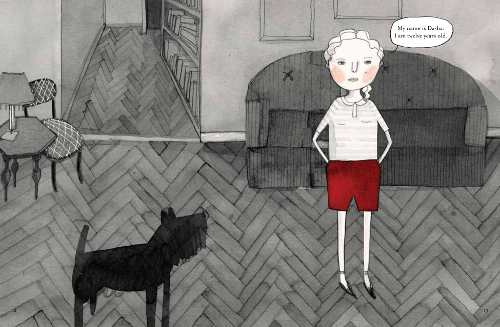A Visit with Dasha Tolstikova
 February 23rd, 2016 by jules
February 23rd, 2016 by jules
(Click to enlarge)
Last year, I read Dasha Tolstikova’s A Year Without Mom, released by Groundwood Books in October. Dasha and I started a conversation about this book at year’s end, and life (as it is wont to do) got in the way quite a bit, interrupting our chat, but we finally wrapped it up and I’m posting it today. Better late than never.
I featured Dasha’s artwork here back in 2013, and it’s wonderful to be talking about this book today. A Year Without Mom is what Maria Russo in the New York Times Book Review called a “perceptive story about change, aloneness, ambition and, ultimately, resilience” and Kirkus Reviews called “fascinating and heartfelt.” This 176-page illustrated book follows Dasha herself through a year in Moscow with her grandparents after her mother goes to America to study advertising. Politics are touched upon—essentially, Gorbachev’s leave with Yeltsin taking up the reins—but the book also tells the universal story of a middle-schooler. Crushes, the dynamics between friends, school — all of this without her mother near.
Dasha visits today to talk about this book and what’s next on her plate. I thank her for sharing.

Jules: Hi, Dasha! Thanks for chatting with me about your wonderful book. Can you talk about the decision to tell this story via a graphic memoir? Is it something you’d been thinking about doing for a while now?
Dasha: Hi, Jules. Thanks so much for having me on.
It all started with Harvey! I found this lovely book at the Strand, called Harvey: The Day I Became Invisible [pictured below]. I was in graduate school and had only recently stopped working in film. This book was the perfect cross-section between being a book, movie, and a picture book and a novel — and all the things I was interested in. I knew immediately that this was the format I wanted to pursue.

right at the very beginning of Spring.”
(Click to enlarge)

(Click to enlarge)
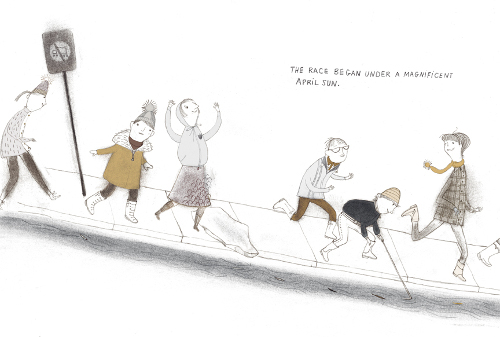
(Click to enlarge)
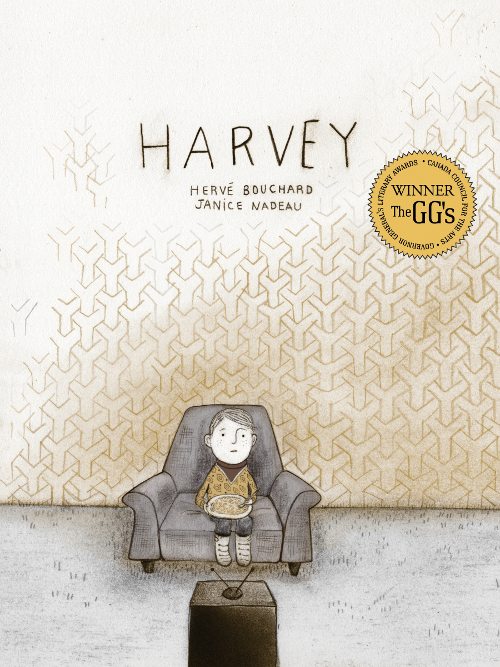
Three spreads from and cover of Harvey
The story came after. I wanted to find something that would warrant the long format but still be young enough so that kids would want to look at. I always envisioned it as a book for 12-year-olds and thereabout. So I went back to think what my own life was like when I was that age. As it happens, that was the year my mom came to America and I stayed behind. I didn’t really intend the book as a graphic memoir, more as a story based on something I experienced. It was important to me that the book be emotional-factual, not necessarily fact-factual, so I never even really thought of it as such while I was working on it.
Does that make sense? (I picked up this saying from Marshall Arisman at SVA. I feel like every single person that went to SVA punctuates their speech with “does this make sense?” after every statement.)
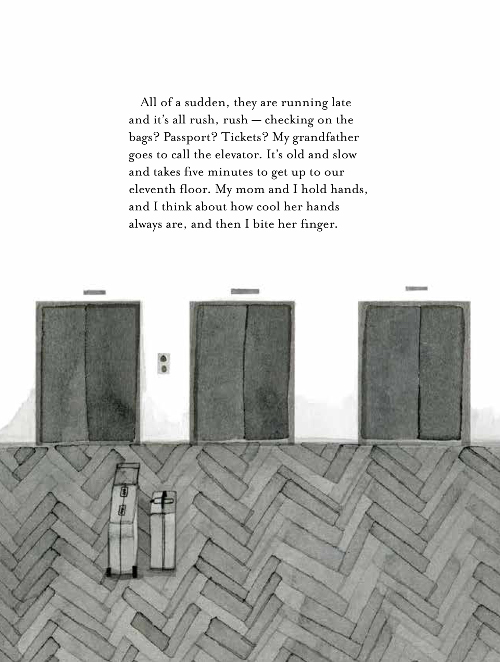
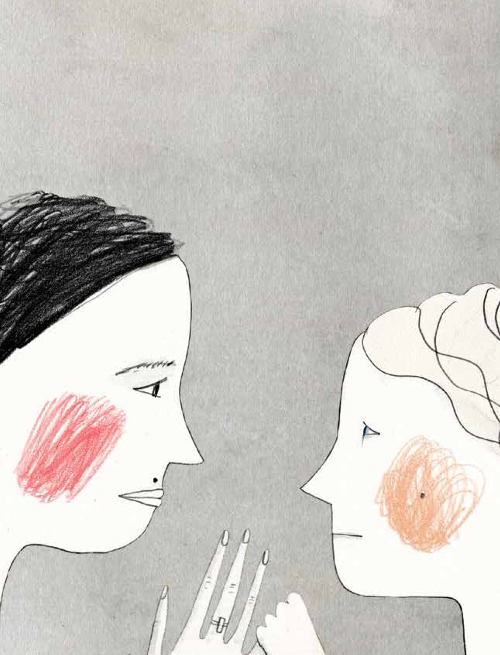
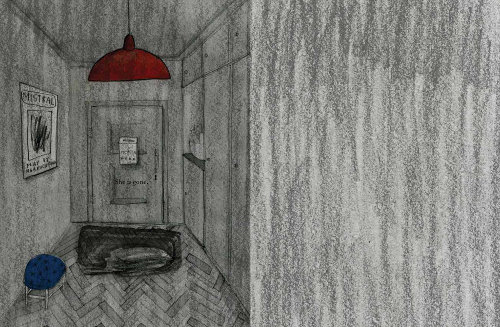
(Click to enlarge)
Jules: I say that all the time to people, despite not being an SVA grad! I worry I say it too much, in fact. I’m always checking on my own clarity, I suppose.
And, yes, what you said makes sense. You wanted to emphasize the emotional beats, yes? Was it easy for you to recall the emotions? Are you someone who remembers that time in your life vividly?


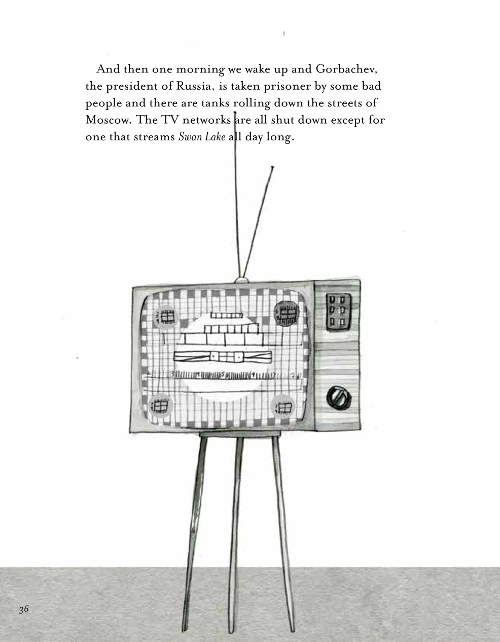

Dasha: Yeah, I wanted to try and engage the reader in the same emotional way that I was engaged at the time, which made me feel like the facts of the situation weren’t as important.
It was both hard and easy to recall the emotions. At the time, I was feeling that the way I interacted with life emotionally was not that different from my 12-year-old self. (I’m not sure this is true anymore, but I am generally overwhelmingly empathetic, and I think it helps to tap into that.) I did a lot of free-form writing to recall the events, jotting down everything I remembered from my childhood around the time. And then one thing would lead to another and another, taking me into unexpected places. I am also still friends with Masha and Natasha, and I asked them a lot of questions about what they remembered, which was very interesting in itself — the way memory works and how emphasis is placed on such different aspects for each person. But at some point you also have to make decisions about what is important and what is not, and it creates a false hierarchy, because who is to say what is more or less important? The only reason you are making that separation is to serve the end of a story and also the way you want the reader to react. The same story can be told in an optimistic and a pessimistic way — without changing much of the facts, just the reaction to them.


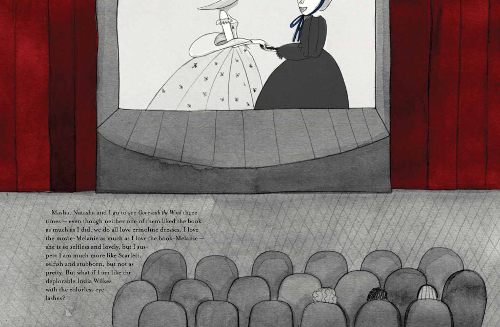
(Click to enlarge)
Jules: Yes, it’s a fascinating look at memory and, as you put it, the hierarchies we form in our minds. Did Masha and Natasha place emphasis on the same memories in such a way that made you question your own? Or vice versa? Does that question make sense? (I just did it again.) I think it’s an intriguing thing we all see play out in our own lives.
Also, I wanna back up a bit: You mentioned working in film, and I know you briefly mentioned it too in your 2013 7-Imp visit (which I very much enjoyed). Can you talk about your work in film and how you think it influences your illustration work now?
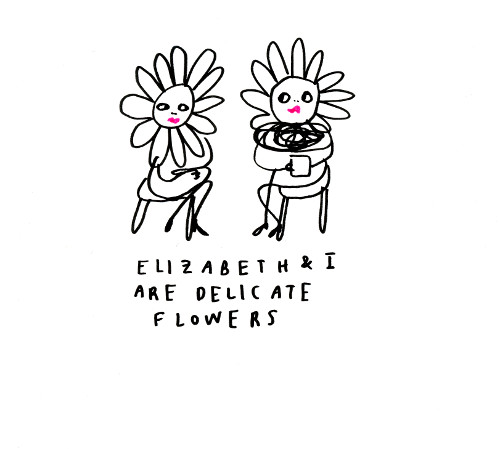
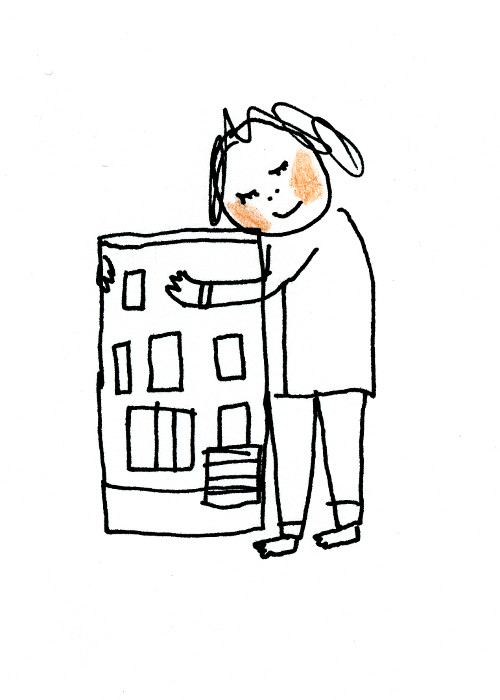

Pieces from Dasha’s portfolio
Dasha: I think they had their own memories, but it didn’t really make me question my own so much. I had had the experience of moving back to Russia after college and reconnecting with my grade-school friends, whom I had not really been in touch with for ten years. I had thought a lot about them in those ten years and was so excited to see them, but when we got together it was very clear that my memory of them was more acute. They had stayed in the same place, and it changed for them, but for me it was frozen. This was one of my first experiences of noticing how memory shifts from person to person. And I learned that you cannot expect another person to hold the same experiences as important as you, even if you were there at the same time.

Yeah, sure. I worked in film for about six years. I started out as a translator in Russia, working on commercials, and then came to New York and worked first (very briefly) in reality TV and then in independent film. I mostly worked on the production side of things, renting equipment and making sure people had food and transportation on set. It turned out that I really had a head for the logistical. But I also read a lot of scripts and thought about storytelling and visual representation in the narrative sense — for the first time in my life. Which I think really influences the way I think about making books now — about turning points and beats and the flow of something. Both are a time-based media, so I think it makes a lot of sense.

Jules: These illustrations are done in pencil and ink wash. I’m no artist, so let me make sure I understand: Doesn’t ink wash mean you’re using the kind of black ink used in calligraphy? Can you talk about that a bit?
Also, sorry for my belated reply. I blame the holidays. Did you have a good New Year’s? And, while we’re on the subject, what’s next for you in 2016? If you mention any books or projects, by chance, feel free to send as many images as you’d like, because I love seeing your art.
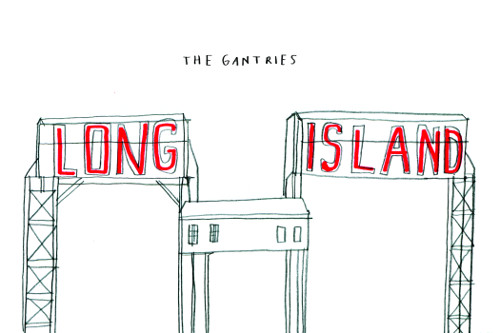
Dasha: I’m sorry for my belated reply. I went away to Russia, and then my family came back — and then I took four days to try and not talk to anyone and quit Facebook and then had to go back to work on Monday and now we are here!
I did have a wonderful New Year’s. It’s one of my favorite holidays. I have a really childish belief in the clean-slate aspect of the year’s turn. It always feels great to me, no matter how actually arbitrary it is.
I still have some projects I am finishing up from last year, two picture books written by other people — one for Groundwood, dark and broody, and another for Sterling about a birthday party. It’s very, very different. I am trying to get them done as soon as I can, because then I don’t have to start my next book until March. And I am really looking forward to some time when I don’t have much due to regroup and maybe experiment a little and get back into writing. My goal for this year is to write my own picture book and originate some other projects. I am having a real moment with poetry at the moment—not sure where that is going—but the rumination of it feels great!
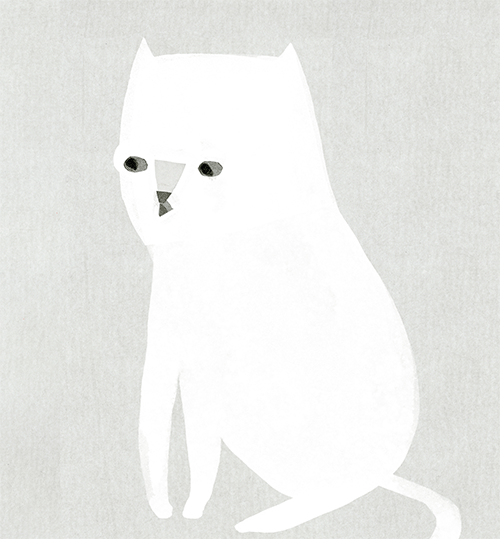

(Click second image to enlarge)
What about you? Is it weird for me to ask what you are up to this year? I would love to know about your projects!
Also, are you going to be at ALA this weekend? I am coming up tomorrow and staying through Sunday. Would love to meet in person, if you are going to be there!
To get back to the A Year Without Mother question at hand:
Yes, the ink that I use for ink wash is just regular sumi ink that I dilute to different darknesses. I have four jars on my desk — very light dilution, medium dilution, very diluted, and then just plain black ink (which I rarely use, to be honest). And then I apply them with a regular watercolor brush to desired darkness. I’ve been using this method since graduate school but am starting to experiment now with water-soluble vs. non-soluble inks. We’ll see how that will change what I am doing.
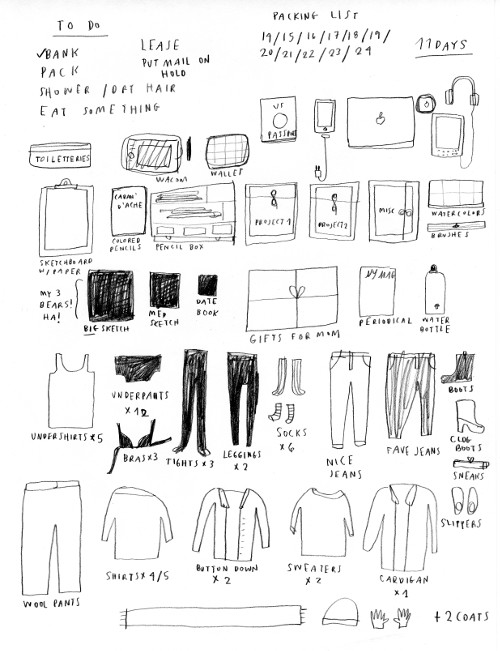

Jules: Once again, a huge delay. And this one is on me — because of travel, the flu, SNOW!
Clearly, I was not at ALA, and now I feel like a jerk for not having responded to your question about that. Did you get to sit in the room for the awards announcements? I guess not, if you left on Sunday. Did any of your big favorites get a medal?
Your projects sound exciting — and very different from each other. And “a real moment with poetry” sounds like a good thing.
What am I up to this year? Well, I’m supposed to be working on a book, but I get in my own way sometimes, so it’s been slow-going. But I know I will travel to Connecticut this year to do some research for the book, so I hope that will kick the project into gear. I’ll speak in Chicago in a few weeks at the Center for Teaching Through Children’s Books at National Louis University, and I’ll speak at the Southern Kentucky Book Fest in April. And other than that … well, we Danielsons hope to move into a new house this year, and it’s all very daunting. I probably shouldn’t plan a lot, because moving is a huge thing. We’re already at the we-could-just-set-everything-on-fire-instead-of-packing stage. Oof.
One more question: What are you reading now?
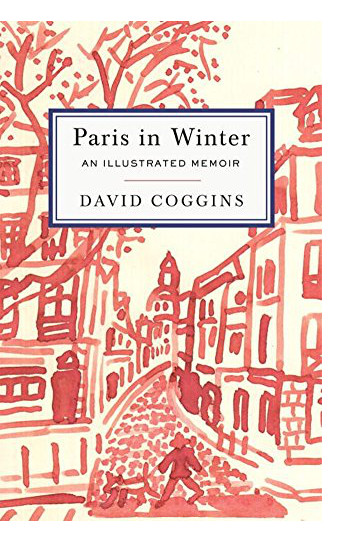 Dasha: Hi!
Dasha: Hi!
ALA was really fun. I felt like a real professional. It’s been really nice the last few years to meet more and more people who love books the way I do. It’s really given me a foothold in the world. And yes, I could not be more thrilled about Sophie’s much much-deserved win. Her work is so wonderful and she was my advisor in grad school, so it feels personally exciting as well. And Christian Robinson is one of my favorite illustrators these days. I guess I am not alone.
I am reading so many things all the time — Lucia Berlin short stories and this book about octopi, an illustrated memoir called Paris in Winter, books on gardening, also a lot of things about meditation and yoga. I think we are really having a moment with that stuff as a culture. I got a bunch of galleys while I was at ALA and am excited to read this book about Oneida, the tableware family. I guess they were really kooky. Also Pax, the Sara Pennypacker book that is supposed to be a real weeper. And the new Boris Fishman, etc. I really love reading so much.
And I’m so excited you are writing a NEW BOOK! YAY!
Moving is horrible. I did it last year. But it’s also exciting. And actually setting some of the stuff on fire might not be a bad idea. Very cleansing! I get rid of so much stuff every time I move. And then it just accumulates all over again.
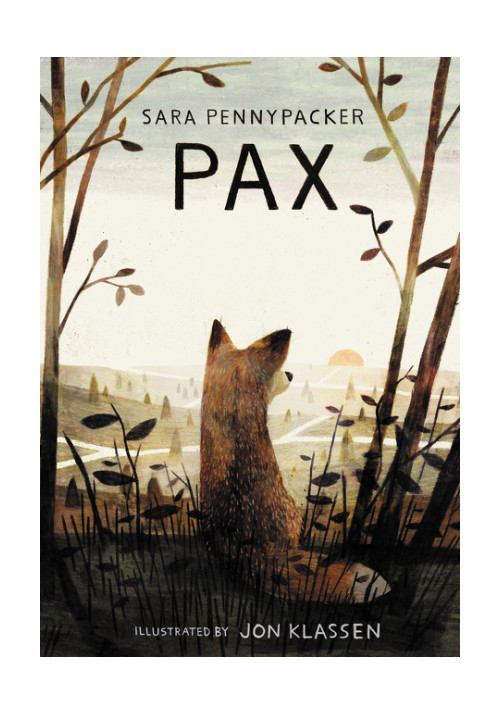
Jules: Yes, it’s hard, the moving thing. I realize it’s a really First-World complaint, as they say, but I wish I could just snap my fingers and have it done.
I read Pax aloud to my daughters last year. (We read a galley.) It’s really quite good.
Thanks for chatting with me and especially for sharing your artwork here at 7-Imp again. I look forward to what’s next for you, Dasha!
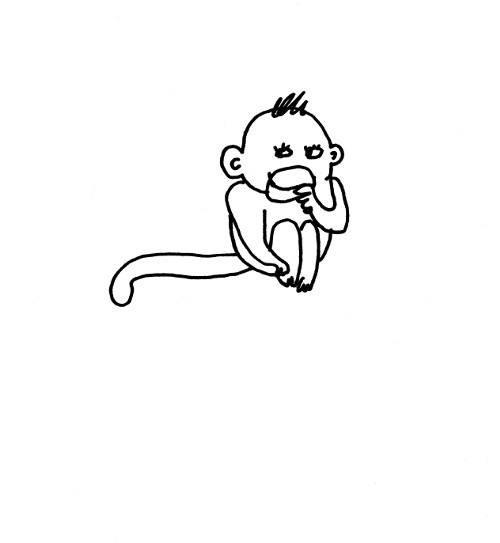
All of Dasha’s art posted by her permission. Art from Harvey posted by permission of Groundwood Books.
